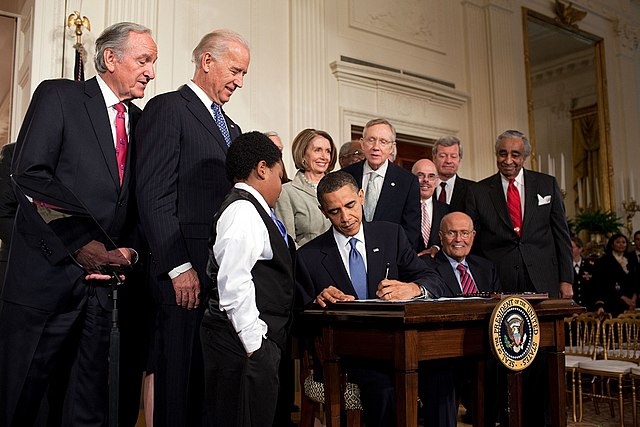
By Stacy M. Brown, NNPA Newswire Senior National Correspondent
Former President Barack Obama’s signature piece of legislation has proved the gift that’s kept on giving for Black and Brown communities in America.
Since its passage in 2010, the Affordable Care Act – better known as Obamacare – has helped cut the U.S. uninsured rate nearly in half while significantly reducing racial and ethnic disparities in both insurance coverage and access to care – particularly in states that expanded their Medicaid programs, according to a new report issued by the Commonwealth Fund, a nonprofit that promotes a high-performing healthcare system.
Obamacare has reduced racial and ethnic disparities in both insurance coverage and access to care — particularly in states that expanded their Medicaid programs, the report’s authors noted.
While much of that progress occurred between 2013 and 2016, federal data show that more than 5 million people gained coverage between 2020 and early 2022, driving the uninsured rate down to a historic low of 8 percent.
Researchers found that insurance coverage rates improved for Black, Hispanic, and white adults between 2013 and 2021.
The coverage gap between Black and white adults dropped from 9.9 to 5.3 percentage points, while the gap between Hispanic and white adults dropped from 25.7 to 16.3 points.
Additionally, uninsured rates for adults in all three groups improved during the first two years of the COVID-19 pandemic, a finding that held true in states that had expanded Medicaid and those that had not.
The report further noted that Black and Hispanic adults experienced larger gains in Medicaid and individual market coverage than white adults between 2019 and 2021.
Between 2013 and 2021, states that expanded Medicaid eligibility had higher rates of insurance coverage and health care access, with smaller disparities between racial/ethnic groups and larger improvements, than states that didn’t expand Medicaid.
For example, the authors found that after Virginia expanded Medicaid in 2019, its uninsured rate for lower-income adults dropped substantially in comparison to neighboring North Carolina, a non-expansion state, and the disparities between Black and white adults narrowed.
Compared to lower-income white adults, larger percentages of lower income Black adults and lower-income Hispanic adults live in states that haven’t expanded Medicaid, the report revealed.
Researchers said Black and Hispanic adults had higher uninsured rates than white adults in 2013, before Obamacare took full effect.
The disparities reflected lower access to employer-sponsored insurance among people with low incomes, an unregulated and unsubsidized individual insurance market, and lack of Medicaid coverage for adults except for very low income parents in most states.
Obamacare attempted to improve coverage rates in several ways, including by allowing states to expand Medicaid eligibility to everyone below 138 percent of the federal poverty level (in 2023, $20,120 for an individual and $41,400 for a family of four), funded nearly fully by the federal government; and by subsidizing and regulating coverage purchased through the individual market.
According to the report, uninsured rates for adults in each of the three racial/ethnic groups fell after the coverage expansions went into effect in 2014, and Black and Hispanic residents reported the largest gains.
Uninsured rates for Hispanic adults fell by 15.7 percentage points between 2013 and 2021.
Also, the Black adult uninsured rate dropped by 10.9 points, and the white uninsured rate declined by 6.3 points.
“These gains reduced coverage disparities considerably,” the authors determined.
The gap between white and Black adults has dropped from 9.9 percentage points to 5.3 points, and the gap for Hispanic adults has declined from 25.7 to 16.3 points.
While the largest coverage gains occurred from 2013 to 2016, adult uninsured rates for these three groups, and for the nation overall, dropped again between 2019 and 2021, as new federal policies aimed at boosting coverage took effect.
“In fact,,” the researchers wrote, “they reached historic lows, despite modest declines in employer-based coverage from pandemic-related job losses.”
They concluded that Obamacare “has been a powerful force for racial equity in health and health care over the past decade.”
“The expansion in access to affordable coverage has served as the backbone for this progress, helping to remove financial barriers and increase access to primary care clinics and other providers where people can get the care, they need to stay healthy,” the authors wrote.


